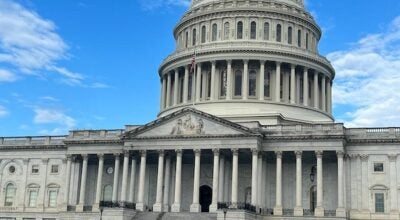Obama tries to move past health care website woes
Published 11:37 am Tuesday, December 3, 2013
WASHINGTON (AP) — Seeking to move past its website woes, the Obama administration is launching a two-pronged health care strategy this month aimed at avoiding enrollment snafus come January while also trying to refocus the public’s attention on broader benefits of the sweeping law.
Case in point: Tuesday morning the administration released a 50-state report saying that nearly 1.5 million people were found eligible for Medicaid during October. As website problems depressed sign-ups for subsidized private coverage, that safety-net program for low-income people saw a nearly 16 percent increase in states that have agreed to expand it, according to the Department of Health and Human Services.
President Barack Obama will focus on such benefits at a White House event Tuesday. Flanked by Americans who the White House says have gained as a result of the overhaul, the president will try to remind Americans that his health law is preventing insurance discrimination against those with pre-existing conditions and is allowing young people to stay on their parents’ coverage until age 26. He’ll also take aim at Republicans, arguing that the GOP is trying to strip away those benefits without presenting an alternative.
Behind the scenes, the administration is furiously trying to rectify an unresolved issue with enrollment data that could become a significant headache after the first of the year. Insurers say much of the enrollment data they’re receiving is practically useless, meaning some consumers might not be able to get access to benefits on Jan. 1, the date their coverage is scheduled to take effect.
On Monday, administration officials and insurance company representatives began holding daily 7 a.m. meetings to discuss the enrollment data. Officials at the Centers for Medicaid and Medicare Services — the department overseeing the insurance exchanges — are also personally reaching out to individuals who have enrolled online to make sure their information is correct and that they are sending payments. Call center representatives are doing the same with people who enrolled over the phone.
“We are very mindful of making sure that consumers who want coverage starting in January are able to get it,” White House spokesman Jay Carney said.
The White House’s approach comes as Obama tries to recover from the deeply flawed rollout of his signature legislation. The failures have emboldened Republicans, put Democratic lawmakers facing re-election on edge, and contributed to a drop in Obama’s overall job approval rating.
Obama had set a Nov. 30 deadline for ensuring that the website was working properly for the vast majority of users. While administration officials declared over the weekend that they had met their goal, counselors helping people use the online health exchange gave the updated site mixed reviews, with some zipping through the application process while others are facing the same old sputters and even crashes.
The website troubles resulted in significantly lower enrollment than what administration officials had hoped for and it’s questionable whether the program will reach the 7 million sign-ups predicted by the Congressional Budget Office. The sign-up period runs through March 31.
But officials now say they are no longer as concerned about the overall number. They say the insurance exchanges will succeed regardless of the total, as long as about one-third of those who sign up are healthy in order to offset the cost of those with more expensive health problems.
“Our goal is to make sure that everybody who wants to enroll through the exchanges is able to do so during the open enrollment period,” Carney said. “We believe those numbers will be sufficient and that the pool of people who enroll will be of the necessary diversity to make sure that the ACA works as envisioned.”
The White House says it is buoyed by high traffic flocking to the website. On Monday, officials said, the site received about 1 million visitors. Officials would not say how many of those had actually enrolled in the insurance policies. Carney on Tuesday said that to deal with the traffic, many visitors were sent an email asking them to try the website later in the day. He said 60 percent of those who received such an email did return to the website.
Medicaid signups are proceeding on a separate track. While subsidized private coverage is available to middle-class people in all 50 states, the expanded version of Medicaid currently is only provided in states that agreed to accept it. So far 25 states and Washington, DC, have done so.
Tuesday’s HHS report did not tease out a separate statistic for the number of Medicaid recipients newly eligible under the law in October. Instead, the total of 1.46 million also included those who signed up and would have been eligible anyway, even without the program expansion.
Nonetheless, the impact of the law was evident. States that expanded their Medicaid programs saw a nearly 16 percent increase in Medicaid applications during October, as compared to previous averages. States that did not expand saw a smaller, 4-percent increase.





